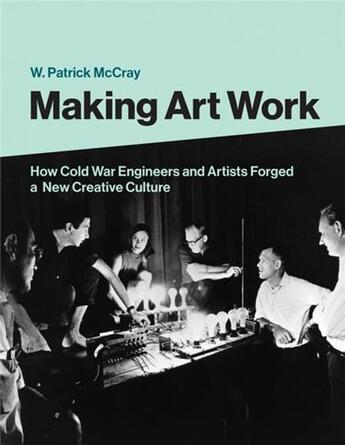-
Date de parution : 20/10/2020
-
Editeur :
Mit Press
-
EAN : 9780262044257
-
Série :
(-)
-
Support :
Papier
Résumé:
b>The creative collaborations of engineers, artists, scientists, and curators over the past fifty years./b>Artwork as opposed to experiment? Engineer versus artist? We often see two different cultural realms separated by impervious walls. But some fifty years ago, the borders between technology... Voir plus
b>The creative collaborations of engineers, artists, scientists, and curators over the past fifty years./b>Artwork as opposed to experiment? Engineer versus artist? We often see two different cultural realms separated by impervious walls. But some fifty years ago, the borders between technology and art began to be breached. In this book, W. Patrick McCray shows how in this era, artists eagerly collaborated with engineers and scientists to explore new technologies and create visually and sonically compelling multimedia works. This art emerged from corporate laboratories, artists'' studios, publishing houses, art galleries, and university campuses. Many of the biggest stars of the art world--Robert Rauschenberg, Yvonne Rainer, Andy Warhol, Carolee Schneemann, and John Cage--participated, but the technologists who contributed essential expertise and aesthetic input often went unrecognized.Coming from diverse personal backgrounds, this roster of engineers and scientists includes Frank J. Malina, the American rocket pioneer-turned-kinetic artist who launched the art-science journal Leonardo, and Swedish-born engineer Billy Kluver, who established the group Experiments in Art and Technology (E.A.T). At schools ranging from MIT to Caltech, engineers engaged with such figures as artist Gyorgy Kepes and celebrity curator Maurice Tuchman. Today, we are in the midst of a new surge of corporate and academic promotion of projects and programs combining art, technology, and science. Making Art Work reveals how artists and technologists have continually constructed new communities in which they exercise imagination, display creative expertise, and pursue commercial innovation.
Donner votre avis














